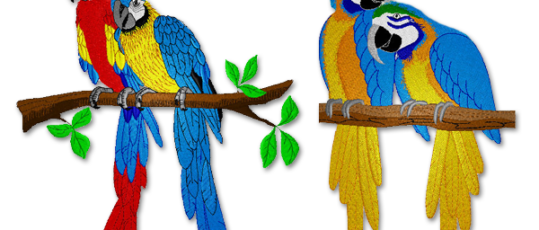Streamlining the Art of Embroidery Digitizing: Step-by-Step Guide
As innovation continues to development, the digitization process has actually become extra available, permitting lovers to bring their intricate styles to life with convenience. In this guide, we will certainly decipher the intricacies of embroidery digitizing, damaging down each step systematically to improve the process and equip both novices and skilled embroiderers alike.
Recognizing Embroidery Digitizing Software Program
Needlework digitizing software application serves as a critical tool for changing elaborate designs right into electronic styles compatible with needlework machines, assisting in exact stitching and modification. This specialized software application enables users to import different photo data styles, such as JPG or PNG, and transform them right into embroidery machine-readable formats like DST, EXP, or PES - Digitizing for Embroidery. By using attributes like stitch editing, underlay choices, and string shade option, digitizing software enables users to control every element of the style procedure
Additionally, progressed needlework digitizing software program offers tools for creating complex designs, changing stitch thickness, and integrating complex information. Individuals can likewise sneak peek the style before sewing it out, ensuring precision and minimizing errors. Additionally, many software programs offer automatic features that aid simplify the digitizing procedure, conserving time and initiative.
Comprehending the capabilities of embroidery digitizing software is necessary for attaining high-grade lead to needlework jobs. By mastering this tool, embroidery enthusiasts and professionals can unleash their creative thinking and bring intricate designs to life with precision and efficiency.

Choosing the Right Layout File
After acquainting on your own with the abilities of embroidery digitizing software application, the following important step in the procedure is selecting the ideal style declare your job. Digitizing for Embroidery. When picking a design file for embroidery digitizing, it's necessary to think about the complexity of the style, the dimension of the last item, and the kind of fabric you will be collaborating with
For complex layouts with great information, a high-resolution picture or vector file is recommended to ensure that the embroidery device can accurately recreate the design. In addition, the dimension of the end product plays a considerable role in selecting the right layout data. Larger layouts may require greater resolution data to maintain clarity and sharpness.
Furthermore, the sort of material you will be stitching on influences the selection of style file. Various fabrics may call for changes in the design file to guarantee that the stitches are effectively aligned and the layout looks like intended. By very carefully picking the right design data based on these aspects, you can establish on your own up for a successful embroidery digitizing process.
Digitizing Tools and Methods
Using specialized software program and accuracy strategies, digitizing devices are important in transforming complex styles right into embroidery-ready data. Needlework digitizing software program, such as Wilcom, Hatch, or straight from the source Embrilliance, gives the necessary platform to convert art work right into stitch information. These programs supply attributes like stitch editing and enhancing, padding alternatives, and lettering tools to guarantee the style translates perfectly onto fabric.
One of the essential techniques in digitizing is creating a clear path for the needlework equipment to adhere to. This entails digitizing each aspect of the style with precision, determining stitch types, thickness, and instructions. By utilizing tools like digitizing tablets or software-specific plugins, embroiderers can achieve a high degree of precision in their digitized styles.
Additionally, mastering the art of underlay sewing is vital for creating high quality embroidery. Underlay sewing maintains the material and produces a foundation for the design, ensuring that the final product is both visually appealing and long-lasting. By recognizing these digitizing devices and methods, embroiderers can elevate their craft and bring intricate designs to life with accuracy and effectiveness.
Personalizing Stitch Types and Instructions
The choice of stitch kinds can dramatically affect the overall look and texture of the stitched design. By purposefully combining these stitch kinds, embroiderers can accomplish depth and measurement in their styles.
Additionally, the direction of stitches plays a crucial duty in enhancing the aesthetic charm of the last needlework. Varying stitch directions can include appearance, emphasize specific aspects, and produce aesthetic interest. For instance, changing the angle of stitches can simulate motion or natural patterns like hair or plumes. By trying out different stitch angles and patterns, embroiderers can bring their styles to life with impressive information and details. Mastering the art of customizing stitch types and directions empowers embroiderers to unleash their creativity and elevate the he has a good point quality of their work.
Screening and Refining Your Digitized Style
To guarantee the accuracy and quality of your digitized layout, thorough screening and improvement are necessary action in the embroidery digitizing process. Once you have actually finished the digitization of your style, it is vital to check it before proceeding with the real needlework. Checking enables you to identify any potential issues such as thread breaks, stitch density troubles, or layout distortions that might influence see here the last result.

After screening, it is vital to improve your digitized style based upon the feedback from the test sew-out. This might include tweaking stitch setups, changing densities, or making changes to the total style to achieve the wanted end result. By repeating through screening and improvement, you can fine-tune your digitized layout to excellence before moving on with the real embroidery process.
Verdict
In final thought, understanding the art of needlework digitizing needs a detailed understanding of the software program, choosing the right design file, making use of digitizing devices and techniques, tailoring stitch types and instructions, and screening and fine-tuning the digitized style. By following these actions, embroiderers can simplify the digitizing procedure and create high-grade stitched designs with precision and efficiency.